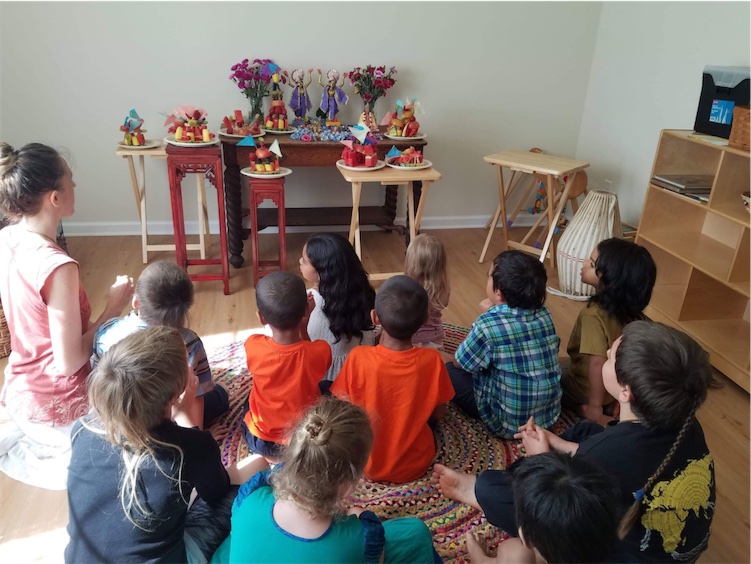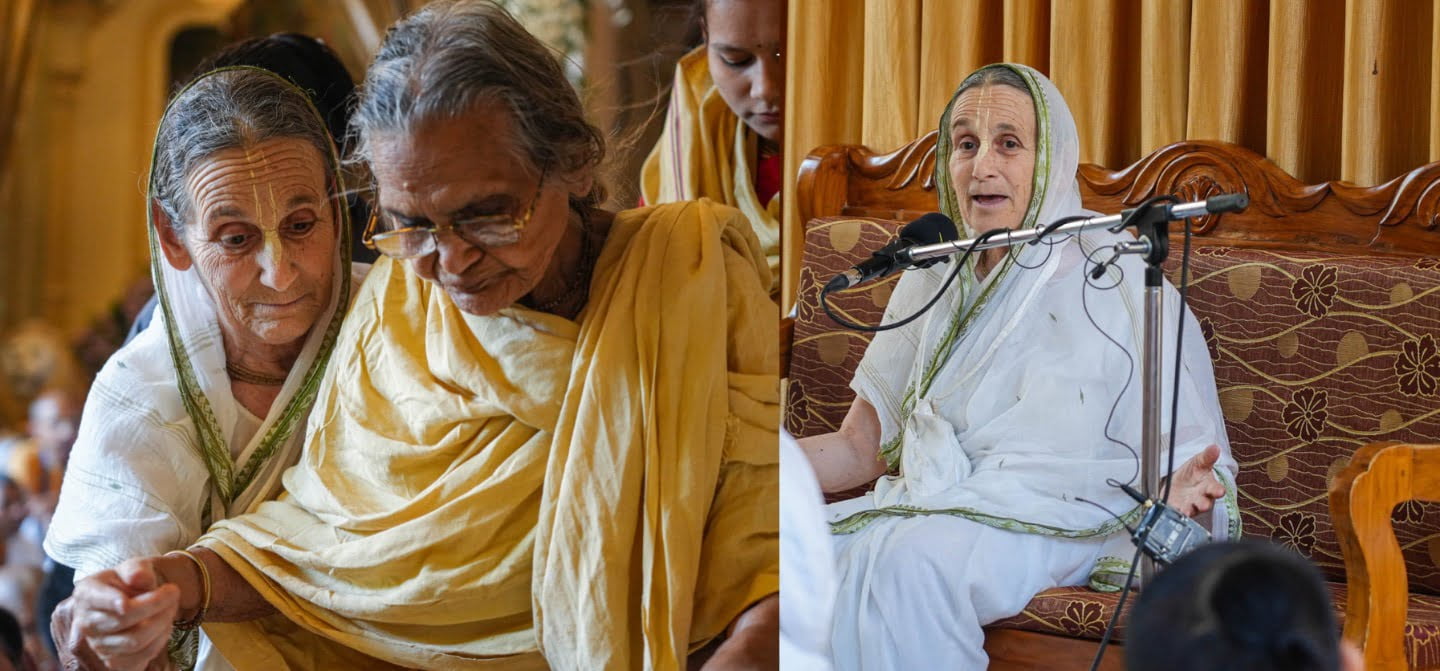New North Carolina School “Goloka” Sees Rapid Growth
By Madhava Smullen | Oct 14, 2019

Now only in its second year, the Goloka Community School in Hillsborough, North Carolina has already drawn eighteen new students and is growing rapidly. Starting in 2018 with a Montessori-style multi-age classroom for three to six year olds, it opened a first through fourth grade class this year, with plans to expand to a larger building in the next school year.
Before becoming a devotee, director and early childhood teacher Audarya Lila Dasi was doing her Bachelor of Science degree in biology and was planning on working at a nature school, when she met ISKCON Denver president Tusta Krishna Das.
“He was such a saint that I thought, ‘This person is awesome, I want to be like him!’” she recalls. “I decided I wanted to teach at a Krishna conscious school instead.”
Audarya Lila got her certification in early childhood education, and spent time working at both Montessori and Waldorf schools while living at the Denver temple.

Goloka Community School
She was then invited to teach in the New Goloka community in North Carolina, where there was a small homeschooling group that had gone through several names including Hillsborough Eco Tech and BKG Academy (BKG Academy now continues as its own separate program).
In 2018 Audarya Lila established the Goloka Community School, which is still operating as a homeschool co-op but is working its way towards private school status.
Located in a residential house behind the Hillsborough ISKCON temple, the school is set in a rural area populated by woods and nature trails. Conveniently for the family-centered community, however, it’s also just half an hour away from the city of Raleigh, twenty minutes from UNC and Duke universities, and very close to the Research Triangle Park where many tech jobs are available.
School at Goloka starts every day at nine to allow children plenty of time with their families, as well as time to attend the morning program at the temple.

School morning program
Each classroom has its own daily morning program too, where students do not just repeat the prayers by rote, but actually learn their meanings.
“They learn everything word for word,” Audarya Lila explains. “For example, the Yamuna classroom, our three to six year olds, are learning the Sri Siksastakam. But along with the Sanskrit, they learn the translation, and the American Sign Language for each word – so they know ‘ceto means heart,’ ‘darpana means mirror,’ and can sign along. The Ganga Classroom, first through fourth grade, are learning the Gurvastakam in the same way.”
After their morning program, all the students have snack time and a community class together as a school, so that they can get used to interacting with people of different ages rather than the compartmentalized experience most kids have today.
On each day of the week, the subject of the class is different. On Monday, students make soup and bread together, with each child bringing a vegetable to cut up and helping to roll the dough. On Tuesday, they have a homesteading class, where they learn practical skills like grinding grain, gardening, and making clay pots. “We try to incorporate the sixty-four arts that the Gopis master,” says Audarya Lila.

Bathing Laddhu Gopal
On Wednesday, children do ‘seva,’ cleaning the altar and bathing their Deities. On Thursday, they walk to the temple, where they have a combined morning program for the whole school in front of Sri Sri Radha Golokananda. And on Friday, parents Amal Shyam and Atula lead an art class.
Throughout the rest of the day, Goloka Community School uses the Oak Meadows curriculum utilized by many private schools and homeschoolers, but adapts it for Krishna conscious learning.
“We cover all the subjects, such as science, art, music, math, literary arts, and social studies, just with Krishna conscious infusions,” says Audarya Lila. “For example, with the older class, we’re doing a project on topography. In the curriculum, famous natural spaces were used; but we’ve switched them for devotional places like the Yamuna river and Govardhana hill. Another example is our anatomy project – along with the anatomy of the gross body, we added the chakras and the soul.”
Audarya Lila also brings elements of the nature schooling she originally studied to Goloka. Students often take field trips to the nearby Flutesong Farm, run by devotees, as well as nature walks on trails behind the temple.

Visiting the cows
All this has attracted many new students, including some whose families moved specifically to enroll their children in Goloka. Now, there are big plans for the school. Audarya Lila and her husband are raising funds to expand it to a larger facility on a new piece of land near the temple next year. The intention is for it to become a fully licensed private school, adding classrooms one year at a time until there are six multi-age classrooms, each spanning an age range of three years.
Audarya is also intent on making the school a safe and professional institution that can serve children in the community until they go to college, and become a blueprint for other ISKCON schools.
One of the ways this is being done is to involve parents more, along with teachers Kala Nipuna, Sita, Nila Madhava, Amal Shyam and Atula.
“We like to have our parents come in and do classes, help out with different things, which makes it a community school,” says Audarya. “And that also creates more transparency – they feel more at home at the school, and they know what’s happening there.”
Audarya Lila points out that safety and professionalism are more important than ever, and that ISKCON schools must step up their game to remain relevant.
“There’s a different mood now in ISKCON,” she says. “Parents are more wary and have no problem sending their children to other schools if they’re run in a way that makes them feel safer.”
Now, she explains, is the moment in ISKCON’s history to focus on improving childcare and education.
“Temples have been established, book distribution is happening in many places,” she says. “It feels like the era to start stable gurukulas. So many gurukulis have grown and are grihastas now with their own kids. We’re ready for gurukulas, and we’re ready for ones that last; that are safe; professionally run; and that parents can count on.”
* * *
For more information please visit: http://golokacommunityschool.com/












